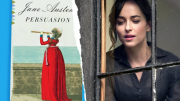Warning: There may be spoilers throughout the article!
If you’ve ever been on the BookTok side of TikTok, you may be familiar with the name Emily Henry. Emily Henry, #1 New York Times bestselling author, has consistently pushed out successful novel after successful novel—from Beach Read to Funny Story. And, maybe after the first few books, nothing seems out of the ordinary, but seeing as she has published hit after hit for the past four years, it starts to beg the question: How is Emily Henry so successful? And what is her “formula” for becoming so successful? Specifically, how was she able to stay relevant even after her 2020 book Beach Read garnered so much attention? If you’re a young writer looking to churn out money-making pieces of writing, stay tuned, as I’ll be diving into the common themes, plot devices, and archetypes Henry uses to produce her best-selling hits from 2020 and beyond! To analyze these components, I will be breaking down her 5 most recently published books.
1. Beach Read
Beach Read, contrary to its name, is not much of a beach read. Instead, it’s an emotionally tumultuous, deeply moving story. The main characters, Augustus and January, start off as enemies and eventually turn into lovers. Among Henry’s books published after 2020, Beach Read is one of two books with the enemies to lovers trope—a common dynamic that many romance readers typically enjoy. In addition, January and Augustus are polar opposites. The major turning point, in my opinion, is when Augustus and January make a deal to write in each other’s writing styles. January, a romance writer who ends her stories with happy endings, must now write cynical dark fiction.
While January is your typical sweet, hopeless romantic main female lead, Augustus is your brooding, mysterious main male lead. These archetypes, as discussed later, come to be a common theme among all of Henry’s books.
We then meet Poppy, a spontaneous travel blogger, and Alex, a calm high school literature teacher, who are the main characters of People We Meet on Vacation. Once again, their two opposing personalities come into play. Similar to January and Augustus in Beach Read, it’s a peppy girl and a calm guy. The only difference is that instead of the enemies to lovers trope, it’s friends to strangers to lovers. In terms of the major turning point, I’d say that Poppy reaching out to Alex to go on one more trip together is what causes them to become strangers to lovers. Previously, the two took frequent trips together each year, but after a few years, they stopped and grew distant.
As the second book published by Henry, it’s quite evident that there is a pattern forming. No matter the trope at hand, the girl tends to lean on the more bubbly, spontaneous side, while the guy is more mysterious and calm.
3. Book Lovers
This third book published by Henry, Book Lovers, is essentially like a replica of Beach Read. Nora is a literary agent and Charlie is an editor. The two are enemies, and they become lovers after coincidentally being in the same tiny town, Sunshine Falls, during August. The only difference between Book Lovers and Beach Read is that Nora, the female lead, is put together and cutthroat, while Charlie is the exact same. In terms of the turning point of Charlie and Nora’s relationship, I believe it’s when Charlie asks to edit one of Nora’s client’s books. Nora is vehemently against the idea at first, but after realizing that there is no one else who could do the job, she agrees. While this is the major turning point for the two characters’ relationship, individually, they have their own turning points within the story.
So to summarize, Book Lovers is an enemies to lovers trope and is between two very similar characters.
4. Happy Place
Happy Place is essentially like People We Meet on Vacation on crack. It’s more dramatic, more tension-filled, and much more “extreme” compared to People We Meet on Vacation. The most glaring difference is that instead of friends to strangers to lovers, it’s ex-fiances to strangers to lovers. In addition, the characters and plot move along very differently. The two main characters, Harriet, an aspiring doctor, and Wyn, a carpenter, have very different personalities. Harriet is very closed off and a people-pleaser, while Wyn is a womanizer and smooth-talker. After being broken up for six months, all of a sudden, their friends decide that they want to have one more getaway together—a final goodbye to their annual vacation home. Just for a week, Harriet and Wyn have to pretend they’re still engaged. The major turning point in Happy Place is when Harriet discovers that Wyn is also at the vacation home, contrary to her previous belief that he’d be all the way back in Montana.
To summarize, Happy Place is a tumultuous ex-fiances to strangers to lovers story between two different characters. While similar to other books Henry has written, it has its own flair. This gives the book a unique “personality” of its own!
5. Funny Story
Henry wasn’t kidding when she said that this book is a funny story. The main character, Daphne, gets engaged, and right when she’s about to get married, her husband, Peter, realizes that he likes his childhood best friend, Petra, more than her. Daphne gets tossed to the side and forced to move out of her and Peter’s house within a week. Left with no choice, she calls Petra’s ex-boyfriend, Miles, to see if he’d be willing to room with a stranger. The unique thing about this book is that the turning point already happened before the book’s actual plot started. As Daphne recounts the events that led to her living with Miles, the turning point of the book begins when she mentions moving in with him. Because practical, librarian Daphne and chaotic winery worker Miles are complete opposites. This extreme difference in personality combined with a plot filled with tension allows for a magnificent book! This book, unlike any other of Henry’s romance novels, doesn’t even have a cliche trope to slap on it. It’s simply its own chaotic bundle of pages.
It’s evident that when you look at the first four books by Henry, she tends to interchange the tropes, the characters, and the personalities. Essentially, trying on every possible combination of tropes + personality types until we get to Funny Story. In itself, Funny Story is a romance novel unlike any other. While all the other stories could more or less be summed up by a story mountain, Funny Story starts off sloping downwards instead of upwards, but then it goes up and down a few times before finally landing downwards.
I’ve covered a lot in this article, but I still haven’t answered the burning question: does Emily Henry have a secret formula for making these best-selling books?
No. She simply has an addictive writing style, relatable characters, and one hell of a marketing team!






Be the first to comment on "What is the Secret to Emily Henry’s books?"